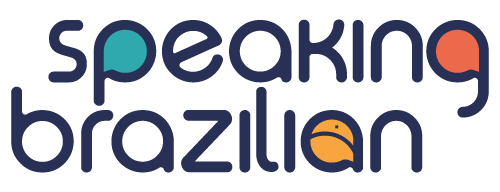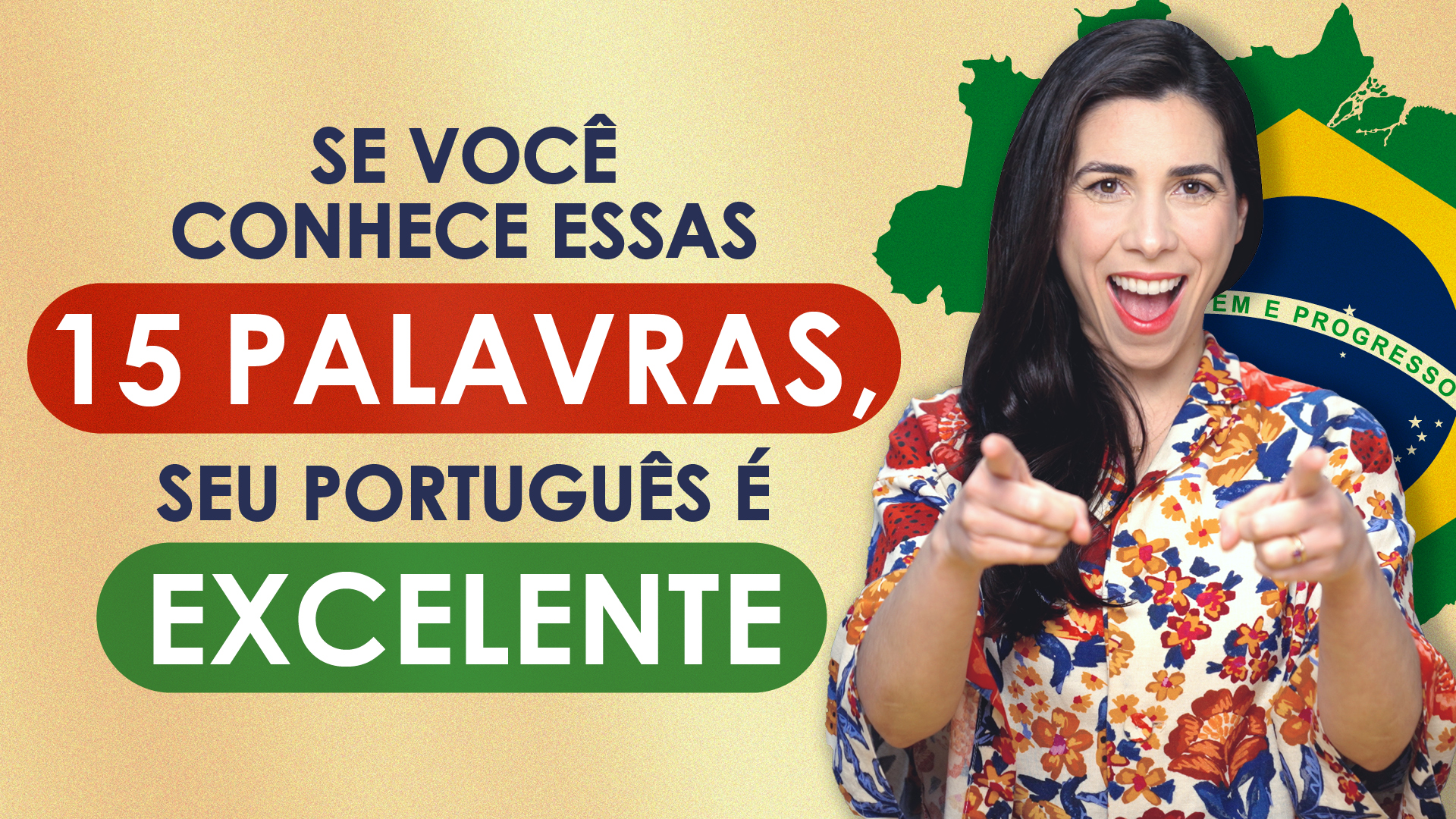Join the Speaking Brazilian YouTube Club to have access to the transcript of this video and many other videos.
What time is it? Do you know how to answer this question in Portuguese?
It’s time to learn!
O Relógio/ The Watch
Let’s start by talking about the name of the object that we use to tell the time. Do you know? It’s called RELÓGIO.
In Portuguese, there is no difference between a clock and a watch. We only use the word “relógio.” There are many types of “relógios”. For example:
- Relógio de pulso (Wristwatch)
- Relógio de parede (Wall clock)
- Relógio de bolso (Pocket watch)
How to ask what time it is?
The most common way to ask the time is: Que horas são? (What time is it ?)
In this question, we use the word “horas” (hours) in the plural and the verb SER conjugated in the third person plural.
These are some other ways to ask for the time:
- Que horas são agora? (What time is it now?)
- Você tem horas? (Do you have the time?)
- Você sabe que horas são? (Do you know what time it is?)
- Você poderia me dizer que horas são, por favor? (Could you tell me what time it is, please?)
How to answer the question: “Que horas são?”
Let’s see how to tell the time, from one o’clock to twelve o’clock:
- 1:00 – É uma hora. (It ‘s one o’clock.)
- 2:00 – São duas horas. (It ‘s two o’clock.)
- 3:00 – São três horas. (It ‘s three o’clock.)
- 4:00 – São quatro horas. (It’s four o’clock)
- 5:00 – São cinco horas. (It ‘s five o’clock.)
- 6:00 – São seis horas.(It ‘s six o’clock.)
- 7:00 – São sete horas. (It ‘s seven o’clock.)
- 8:00 – São oito horas. (It ‘s eight o’clock.)
- 9:00 – São nove horas. (It ‘s nine o’clock.)
- 10:00 – São dez horas. (It ‘s ten o’clock.)
- 11:00 – São onze horas. (It ‘s eleven o’clock.)
- 12:00 – São doze horas. (It ‘s twelve o’clock.)
- 12:00 – É meio-dia. (It ‘s noon.)
- 24h – É meia-noite. (It ‘s midnight.)
Tips:
– The numbers one and two vary in gender. The other numbers are invariable.
For example:
- um minuto / dois minutos (one minute/ two minutes)
- uma hora / duas horas (one hour/ two hours)
– We use the verb in the third person singular “é” (it is) only to say “é uma hora” (“it is one o’clock”), ” meio-dia” (noon), or “meia-noite” (midnight). In all other cases, we use the verb in the third person plural (são).
How to tell the hours and minutes
We usually connect the hours and minutes with the word E (and). Let’s see some examples:
- 3:15 – São três e quinze. (It ‘s three fifteen.)
- 3:20 – São três e vinte. (It ‘s three twenty.)
- 3:30 – São três e trinta. (It ‘s three thirty.)
- 3:30 – São três e meia. (It ‘s half past three.)
- 3:45 – São três e quarenta e cinco. (It ‘s three forty-five.)
- 3:45 -São quinze para as quatro. (It ‘s quarter to four.)
- 3:50 – São três e cinquenta. (It ‘s three-fifty.)
- 3:50 – São dez para as quatro. (It ‘s ten to four.)
Tips:
– We only use the word “horas” (“hours”) when it is an exact time.
– In Brazil, we do not use the word “quarto” (“quarter”) instead of “quinze minutos” (“fifteen minutes”).
How to ask what time something happens
How to ask what time something happens in everyday life? What time did something happen in the past? What time will something happen in the future? To ask this type of question, we use the phrase “a que horas” (what time).
For example:
- A que horas você acorda normalmente? (What time do you usually wake up?)
- A que horas ele chegou? (What time did he arrive?)
- A que horas você vai ao dentista? (What time are you going to the dentist?)
Note: In colloquial language, many people omit the preposition A and just say “que horas” (“what time.”)
How to say what time we do something
To say what time we do something, we must always use the preposition A. This preposition merges with the feminine plural article AS, so we must write ÀS (with the grave accent). to ask this type of question, we use the phrase “what time.”
For example:
- Eu acordo às sete da manhã. (I wake up at 7 am.)
- Ele chegou às dez da noite. (He arrived at 10 pm. )
- Eu vou ao dentista às duas da tarde. (I’m going to the dentist at 2 pm)
Remember that “uma da tarde” (“one o’clock”), “meio-dia” (“noon”) and “meia-noite” (“midnight”) are different because the words are in the singular.
- Eu almocei à uma da tarde. (I had lunch at one o’clock.)
- Eu almocei ao meio-dia. (I had lunch at noon.)
- Eu fui dormir à meia-noite. (I went to bed at midnight.)
Tips:
– When we want to make it clear that we are talking about the morning or evening, we can use the phrases:
- da manhã (in the morning)
- da tarde (in the afternoon)
- da noite (in the evening)
– The expression “em ponto”(on the dot) is used a lot to emphasize that we are talking about the exact time, not one minute more or less. For example:
- Eu saí de casa às dez horas em ponto. (I left the house at ten o’clock sharp.)
24-hour clock or 12-hour clock?
In Brazil, we use both the 24-hour and 12-hour clock. The 24-hour clock is commonly used by companies and in somewhat formal situations, such as scheduling meetings or appointments. For example:
- Sua consulta está marcada para às quatorze horas. (Your appointment is scheduled for fourteen hours.)
In colloquial language, the 12-hour clock if often used.
That’s it! I hope you enjoyed this lesson!
You’ll find more Portuguese lessons at the bottom of this page.
Até a próxima!
Speaking Brazilian School Team


